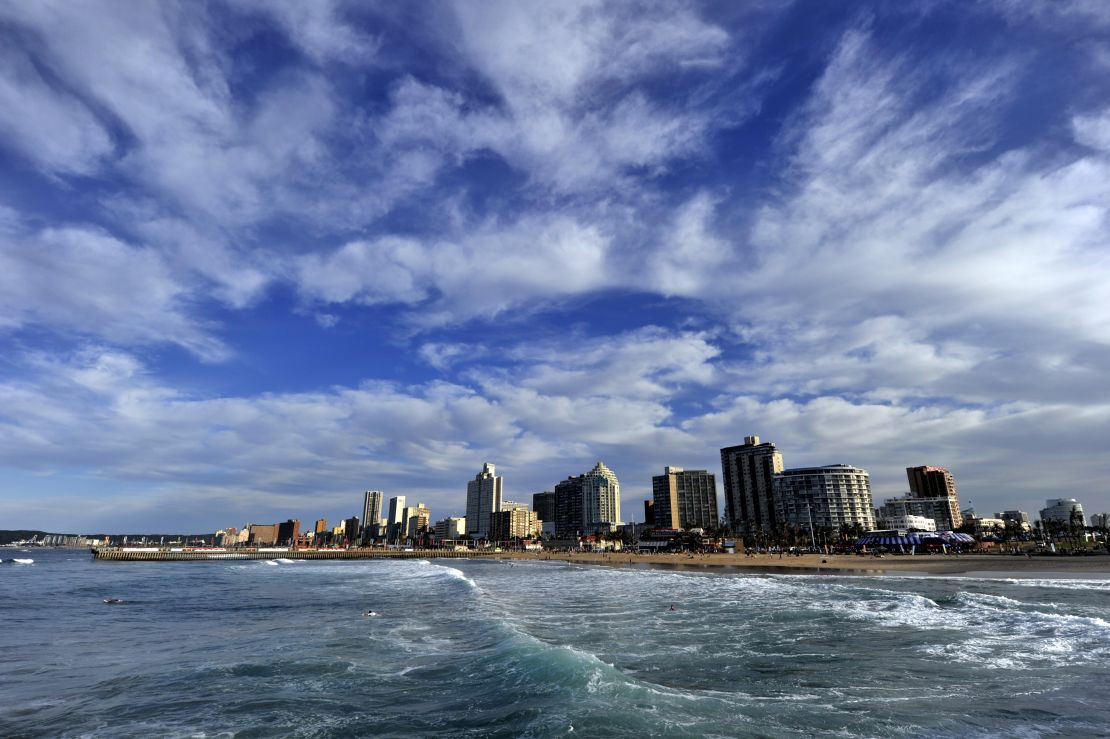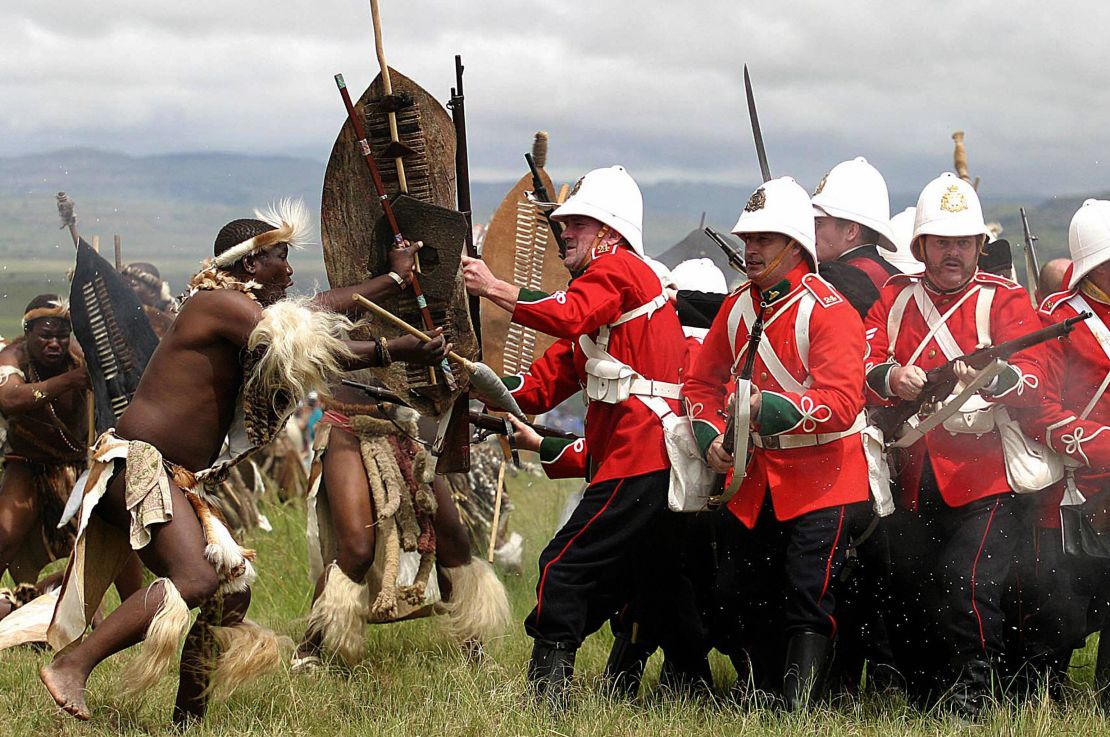Editor’s Note: Part culture show, part travel show, over six weeks Fusion Journeys takes six stars of the creative world on a journey to a location of their choice. There, they will learn create something new inspired by their experience. From Monday 16 April, American opera singer Thomas Hampson travels to Durban, South Africa, to work with Ladysmith Black Mambazo. Watch the show every Monday, Wednesday and Friday from April 9 to May 18, during Connect The World, from 20:00 GMT.
Story highlights
South Africa's former Zulu Kingdom offers history, culture, wildlife
The South Coast offers divers the chance to interact with spectacular marine life
Visitors can take in safaris, Zulu ceremonies and untamed landscapes
Spread across a 600-kilometer stretch of South Africa’s east coast, the former Zulu Kingdom boasts one of sub-Saharan Africa’s most eclectic blends of wildlife, history and culture.
Largely contained today within the province of KwaZulu-Natal, the Kingdom’s historical borders offer the adventure-minded traveler everything from traditional Zulu ceremonies to spectacular safaris, and a remarkably diverse array of scenic beauty.
Here is CNN’s guide to exploring this unique region.
Durban
Most international travelers will find it easiest to start their journey from Durban, the large port city famed for its warm winters, hot summers and golden beaches.
From there, take the 30-minute drive from the city center to the Valley of a Thousand Hills – a Zulu province that takes its name from the myriad of headlands that tumble down the mighty Umgeni River, flowing out to the Indian Ocean.

Those with a stomach for heights and a well-toned set of calf muscles should head straight up the 960-meter mountain “emKhambathini” or “Place of the Giraffe Acacia Trees” – named after the umbrella-shaped tree that flourishes throughout the region.
“The views from here embody the spirit of the Zulu Nation” says Ngokozo Mdluli, a local travel guide who specializes in Zulu culture. “You’ll see old colonial outposts sitting across from traditional tribal settlements, all set against an incredible variety of plant life.”
See also: All-American opera singer finds South African soul
South Coast
Travel next to the South Coast. Situated just south of Durban and extending 150 kilometers from the Umkomaas River to Port Edward, it’s also known as “Paradise of the Zulu Kingdom.”
If you happen to be here between May through to July, there’s no excuse to miss the “Sardine Run” – when the biggest shoal on Earth congregates around the South African coastline, prompting an annual feeding frenzy of mammoth proportions.
In terms of sheer biomass, researchers estimate the sardine run could rival East Africa’s great wildebeest migration, with dolphins, sharks and diving sea birds arriving in pursuit of billions of silvery pilchards. Tourists can view this aquatic spectacle from either land, sea or air.
Those who can’t get enough sea life will do well to explore the Aliwal Shoal, a world-famous shark-diving spot and, just to its south, the Protea Banks, an underwater museum of shipwrecks and reefs.
Zululand
Located in the subtropical northern district of KwaZulu-Natal, Zululand – as its name suggests – is the beating heart of the Zulu Kingdom.
“We are a very friendly people” says Mdluli, who himself was raised in a traditional Zulu village. “Don’t be surprised if on your journey you get invited to share some locally brewed beer with the village elders and you can experience them communicating with the ancestors. If you’re lucky you’ll be allowed to watch the traditional dance ceremonies.”
Mdluli recommends arriving in September to see the biggest cultural event in the Zulu calendar – the “Umhlanga,” or Reed Dance ceremony. Over the course of eight days, tens of thousands of Zulu maidens arrive from their villages bearing a long reed and proceed amidst singing and dancing to the palace of the Zulu King in the royal town of Nongoma.
If you’ve missed the ceremony, you can still catch the four-day monthly Mona cattle and craft show here, where everything from cattle to magnificent examples of beadwork and traditional medicine are bought and sold within meters of each other.
Zululand is also home to some of the Kingdom’s most diverse and enchanting forests. Among them, the Dlinza forest is an ornithologist’s goldmine – teeming with over 600 exotic bird species. The adjacent Ongoye forest boasts an abundance of rare and endemic tree and plant species.

Battlefields
For almost the entire 19th century, the Zulus, Britons and Boers were engaged in a bloody battle for possession of land and sovereignty across Kwazulu-Natal.
Many of the most gruesome encounters were concentrated around an immense battleground that stretches from the Drakensberg Mountains, north to Volksrust and east to Zululand, covering plains of astonishing natural beauty that offer more than just famous battle sites.
The rough-hewn elegance of the landscape is dotted with poignant reminders of the region’s violent history. Among them are haunting memorials on the field of Isandlwana, where the Zulu army killed over 1,000 British soldiers, gravestones at Fort Pearson and the towering monument at Spioenkop, one of the most violent battles of the Anglo-Boer War.
To uncover this troubled history, visit the site of the Battle of Blood River – where causalities were so numerous between the warring Zulus and Dutch Vootrekkers that the river allegedly turned red with blood.
Today there are two illuminating museums – the Ncome and Blood River Museum offering different historical interpretations from each of the opposing sides.
The Elephant Coast
Conclude your journey on the animal frontier that is the Elephant Coast. The area includes Africa’s oldest game reserve, the Hluhluwe-Umfolozi- - one of the few reserves where you can see African elephants, black rhinos, Cape buffalo, lions and leopards (the “Big Five”) all in one place.
Further east, and just below the border with Mozambique, lies the Greater iSimangaliso Wetland Park. In 1999, the park was given World Heritage status due to its exquisite biodiversity, delicate ecosystems and abundance of natural beauty.
Here you’ll encounter some of the world’s highest sand dunes, meticulous coral reefs, turtle-breeding grounds and mangrove swamps – the perfect place to get lost in as your journey to the edge of the Zulu Kingdom draws to an end.













